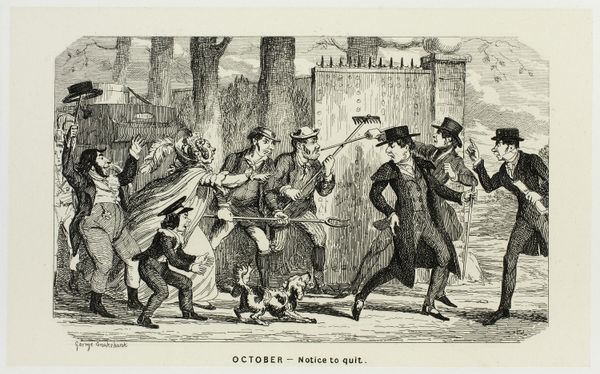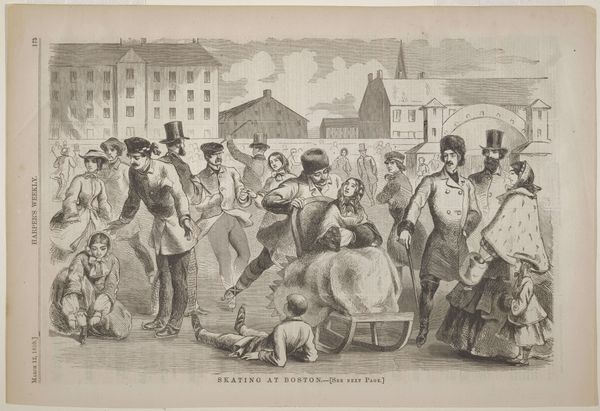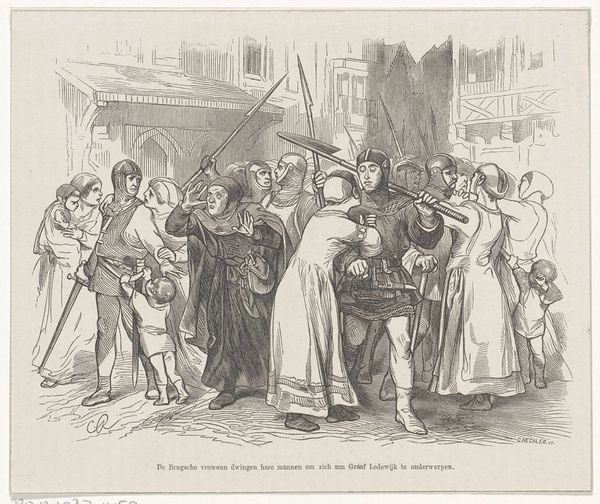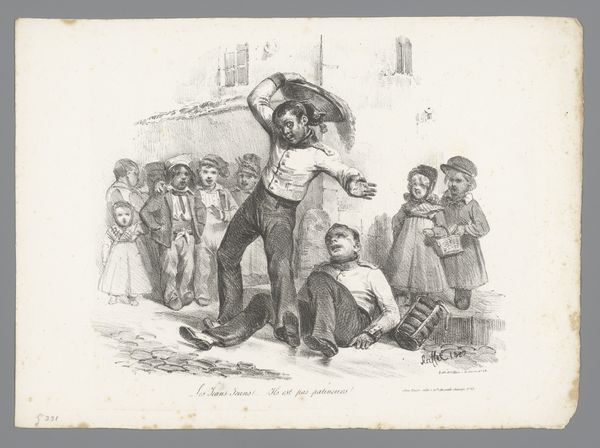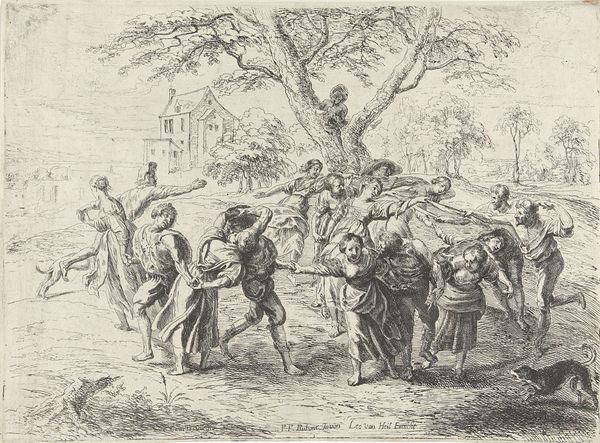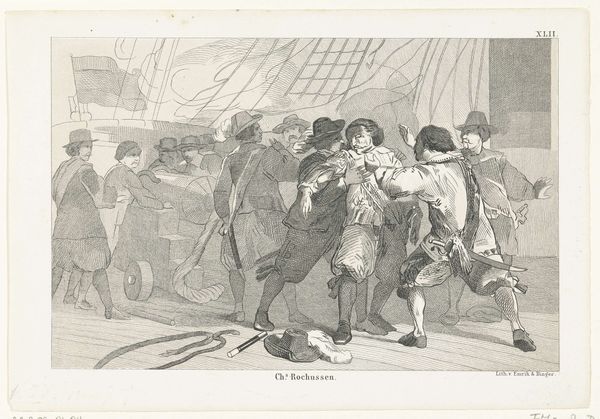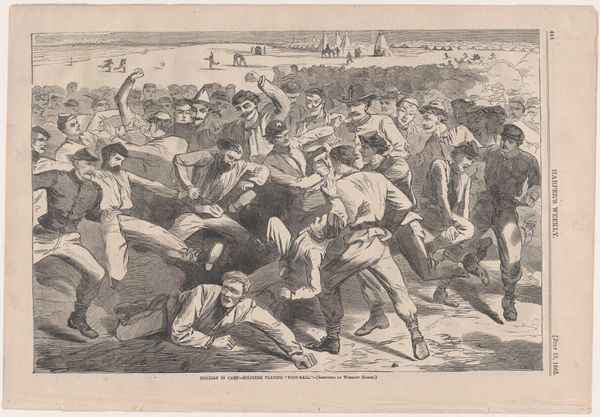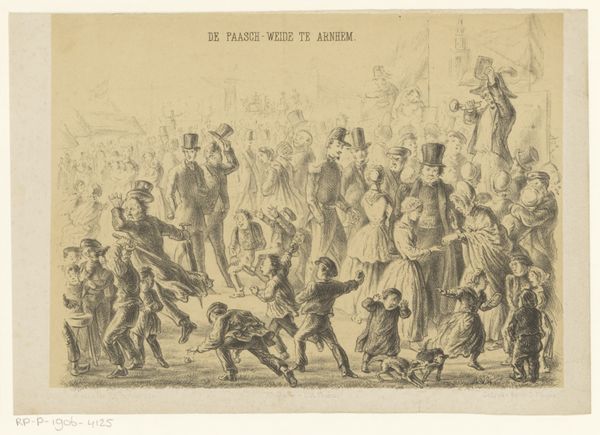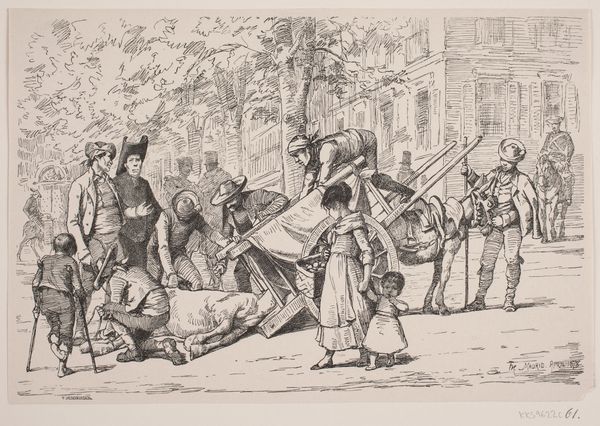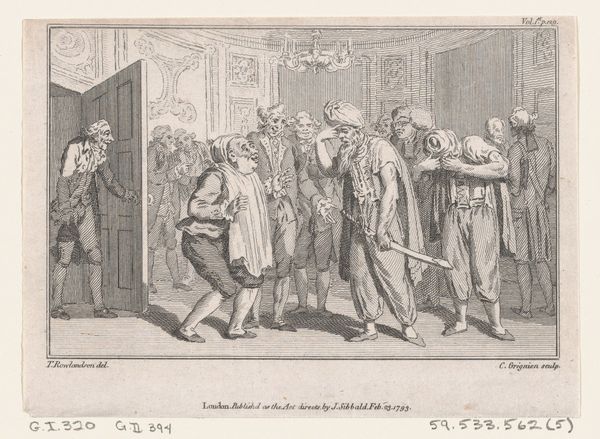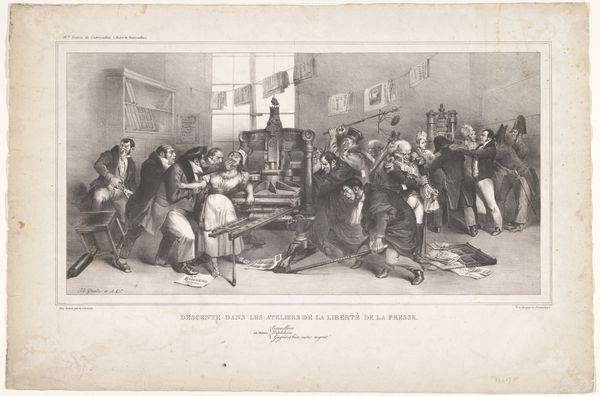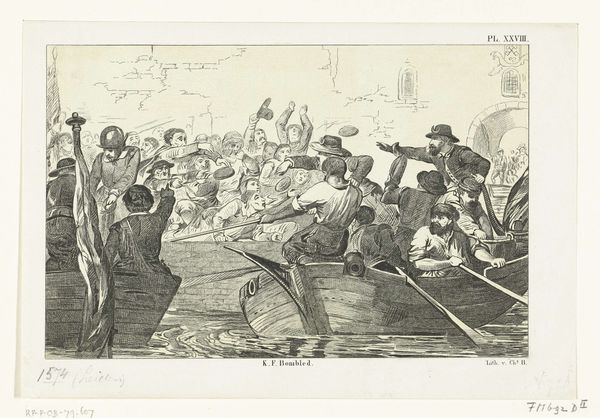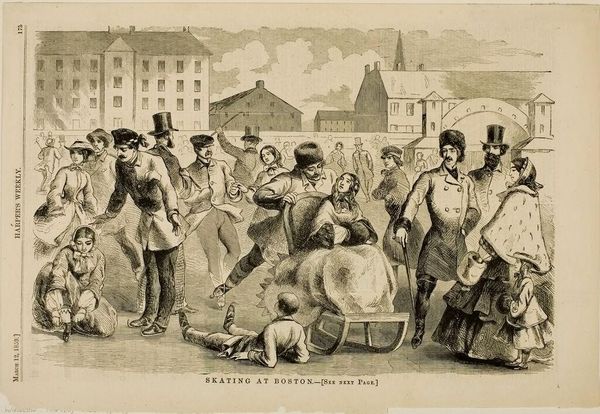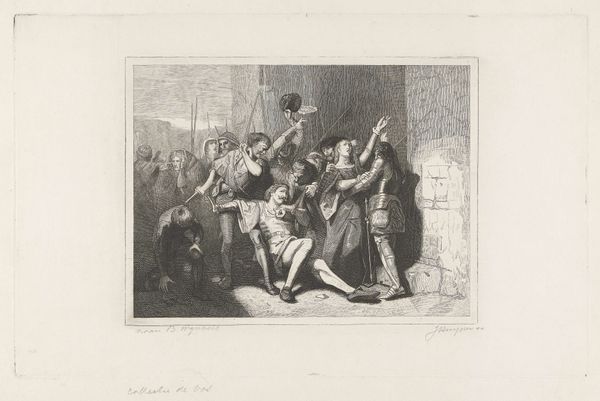
March - Showery from George Cruikshank's Steel Etchings to The Comic Almanacks: 1835-1853 c. 1839 - 1880
Dimensions: 93 × 154 mm (primary support); 222 × 282 mm (secondary support)
Copyright: Public Domain
Editor: Here we have "March - Showery" an etching by George Cruikshank, created sometime between 1839 and 1880. It's full of people, and it seems quite chaotic! What do you see in this piece, looking at it from an art history perspective? Curator: Chaos is a good starting point. I see a commentary on societal unrest bubbling beneath the surface of everyday life in 19th century Britain. Notice the figures using what appears to be a telescope? What are they looking at, or rather, *avoiding* looking at within the immediate scene of disruption? Editor: That's interesting. I was focused on the... antics happening at the center. Some figures appear to be getting physically assaulted. It looks so brutal, but it is treated so casually, almost like public entertainment. Curator: Exactly. Think about the context of this etching appearing in a comic almanac. Cruikshank is offering a critique of social order and the arbitrary nature of violence. The comedic veneer makes it palatable, but it's still a pointed observation, right? Consider, too, who is being victimized. Are there class or social dynamics at play? Editor: I see your point. Now that you mention the class element, the clothing of the individuals varies widely... the division does seem important. The upper classes almost appear disengaged, as they literally turn a blind eye towards the turmoil, while others instigate or are subject to physical struggles. It suggests a hierarchical society indifferent to the suffering of certain groups. Curator: Precisely. The ‘march’ isn't just literal; it signifies the relentless march of social issues swept under the rug, doesn't it? Even within Romanticism, the dark side of sentimentality and escapism is visible here. Editor: That's a perspective shift for me! I initially perceived the work purely based on what's literally illustrated. However, taking your lead I now recognize the importance of situating art within sociopolitical dialogues to gain deeper meaning of intent. Curator: And hopefully inspiring questions about what *hasn't* changed across historical distances and what that teaches us about accountability!
Comments
No comments
Be the first to comment and join the conversation on the ultimate creative platform.
